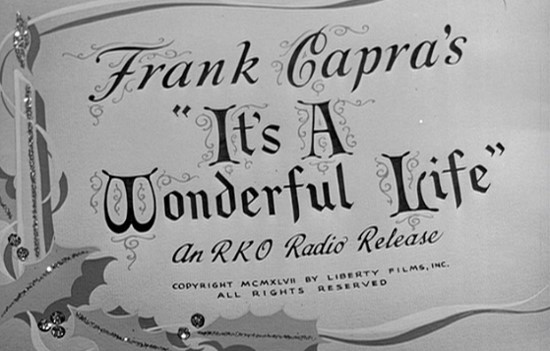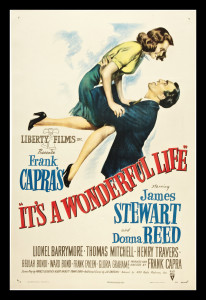Since seeing The Sound of Music onscreen a couple of months ago, I have decided that I want to see as many of my favorite classic films in a movie house whenever the opportunity arises. I realize that I have known many of these great films from viewing them on a 27 inch screen growing up, but while I’ve had an avenue for seeing the films I haven’t really had the opportunity to see them how they were originally intended. Until recently, most films on TV were presented panned-and-scanned (something I’ve been against since ninth grade). Seeing The Sound of Music in a larger format allowed me a chance to really look at the film – its cinematography, its sets, costumes and its actors – with renewed interest. The bigger the format, the more detail and nuance that I can appreciate.
A couple weeks ago I was out driving through northern Westchester with some friends. Driving through Peekskill, we passed a grand old movie palace known as the Paramount Center for the Arts. The theatre opened on June 27, 1930 with a big celebration which included the local mayor and the Paramount Symphony orchestra (who played the overture). The film shown was The Big Pond starring Maurice Chevalier and Claudette Colbert. The 1500 seat venue was built by Paramount subsidiary Publix, Incorporated. For forty years, the movie house was a staple of the small city. It had luxurious lounges and a large Wurlitzer organ that rose from the floor of the stage. However, due to the decline of the studio system and the rise of the cineplex, the theatre started to decline and was sold in 1973. Through some tax error, the building was defaulted to the city of Peekskill who have maintained ownership since 1977.
Interest in the building led the city to establish a non-profit independent organization to run and operate the facility. After the removal of several hundred seats and some technological improvements, the building was once again in 1982. In the last ten years the Paramount has undergone a massive restoration, bringing the venue back to its original 1930 look. The ceilings and walls were replastered. The original paintings and murals were reconstructed. The seating was refurbished and the floors recarpeted. Millions of dollars were poured into the building and the results were staggering. The center now offers a mix of local performances, established artists and films in their repertoire. I’ve seen community theatre productions as well as Barbara Cook’s Mostly Sondheim over the years.
Meanwhile, back in the car we noticed that the sign on the marquee said “Holiday films.” Thanks to my new smartphone, I was on google before anyone could even blink. I was hoping that I would open up the website to see It’s a Wonderful Life listed. Of all the Christmas-related movies I’ve ever seen, this remains my favorite. In fact, it’s just one of my favorite films period. Christmas Eve plays a huge factor in the film’s plotline, but it’s a much more universal – and darker – story than most holiday films. Every year I watch it close to Christmas, if not on the actual holiday. And every year, I appreciate it more and more. The performances, particularly Jimmy Stewart as George Bailey, are top notch. Donna Reed has never been lovelier. Lionel Barrymore hasn’t been more sinister. Frank Capra’s direction is superb, the script strikes the right tone finding a balance between the sentimental and sobering.
I can still recall the Christmas screenings that aired ad nauseam when I was a child, before the copyright restricted the film to two airings during the season. At some point during the holiday season, there was a channel showing the film either in its original black and white or one of those god-awful computer-colorized versions. I was struck by the story, amused by the presence of angels (particularly how they were depicted in outer space). But it wasn’t until I was older that I really understood the severity of the story. (When I was really young, I was almost scared of the sequence in which George sees a Bedford Falls without his existence).
Well, I ended up going alone but it was one of the most enjoyable times I’ve ever had in a movie theatre. Though there were a thousand seats, I think there were only between 30-40 people in the house (some of whom were upstairs in the mezzanine). So I had a whole section of the center orchestra to myself. I observed the crowd coming in. Families and friends bundled in their coats. Some with popcorn and beverages (I resisted the concession stand in the lobby). It had been five years since I had seen anything at the theatre so I took in the surroundings which were removed enough to seem familiar but strange. My last trip had been the 75th anniversary gala concert with headliner Bernadette Peters. (Non-sequitur: every time I’ve seen Bernadette, SarahB has been in house. Even before we met!)
There was something transporting about the experience, almost (dare I say it) like something out of the movies. Sitting there and appreciating the film in the dark house I had these mental flashes that I was back in 1947. The multiplex treatment of films certainly has done wonders for box office business, but what I realized is that it comes at the cost of the romance of movie-going. Movies use to be more like live theatre with roadshow engagements, intermissions and ushers; the works. That sort of thing doesn’t really exist anymore and why I love the opportunity of seeing the films I grew up with on television on the big screen. We applauded as the lights went down and again when they came up. There was a family a few rows in front of me whose son was seeing the film for the first time. He said, “Say, that wasn’t bad for an older film.” I couldn’t help but smile. I left the theatre quite invigorated and ready for the holiday season. And with “Auld Lang Syne” stuck in my head for hours.

